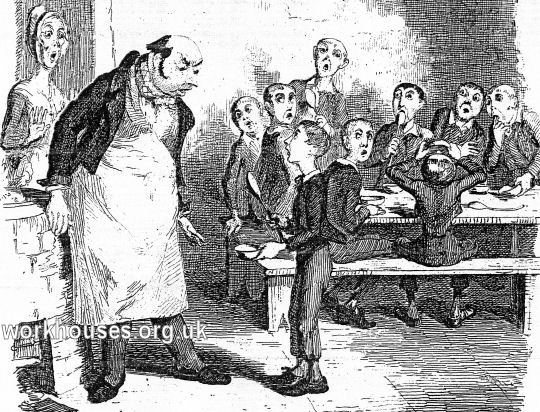Popular Myths about the Workhouse
Myth 10 - In Oliver Twist, Charles Dickens showed us what workhouses were really like.
Many people's impression of what workhouses were like is based on Charles Dickens' 1837 novel, Oliver Twist. Research in recent times has indicated that for several years, Dickens and his family had lived close to the parish workhouse of St Paul Covent Garden, on London's Cleveland Street, and he almost certainly used that as the inspiration for the institution described in Oliver Twist. For example, the diet of the inmates of Oliver's workhouse consisted of 'three meals of thin gruel a day, with an onion twice a week, and half a roll on Sundays.'
In his role as a novelist, rather than a journalist, Dickens spun a very fanciful tale. For example, the inmates of the Cleveland Street workhouse did not have such a meagre diet, nor did any other workhouse in the country. Subsequent adaptations of the story have added their own embellishments to the story. In Dickens' original, for example, the board of gentlemen who oversaw the running of the workhouse were 'sitting in solemn enclave' when informed of Oliver's outrage. Modern film versions, however, typically show them enjoying a sumptuous banquet.
Although the establishment Dickens describes clearly belongs to the pre-1834 era of the Old Poor Law — for example, the parish beadle, or constable, plays a major part in its running, which was not the case afterwards — it was often used by critics of the New Poor Law to condemn the conditions that it would inflict upon the poor.

Oliver Twist asks for more.
Next myth...
Unless otherwise indicated, this page () is copyright Peter Higginbotham. Contents may not be reproduced without permission.


